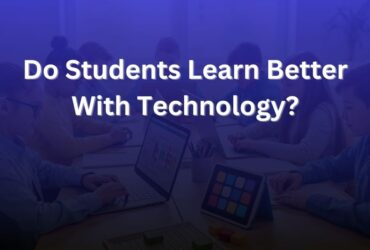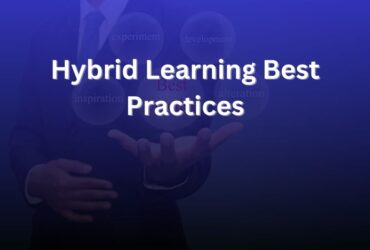Online education can be detrimental due to limited social interaction and hands-on experience. Technical issues and varying learning environments also pose challenges.
Exploring the drawbacks of online education reveals considerable concerns. Students often miss out on the vital classroom camaraderie that fosters collaborative learning and social development. The absence of real-time support from instructors can leave students feeling isolated and impede academic progress.
Technical difficulties, such as unstable internet connections and inadequate access to necessary technology, disrupt learning continuity. The home setting, which doubles as a classroom in online education, may not always provide a conducive learning atmosphere. It can be fraught with distractions and lacking in the structured environment that traditional schools offer. Students with different learning styles may struggle without the immediate feedback and personalized attention that face-to-face interaction supplies. All these factors culminate in a learning experience that might not cater to the comprehensive development of a student, academically or socially.
The Illusion Of Convenience
Diving into the world of online education can be deceiving, appearing as a conduit of convenience on the surface. However, this illusion may gradually unfurl, revealing the widespread downsides such as lack of face-to-face interaction and potential impact on learning outcomes.
With minimal personal interaction, the digital realm often fails to engage students effectively, undermining their academic journey.
The Illusion of Convenience
Online education seems convenient on the surface. But often, it can lead to more challenges than expected. We explore some of these issues below.
Limited Human Interaction
Online learning confines students to computers. This limits genuine human interaction, making learning less enjoyable. Screens can’t replace the warmth of face-to-face contact. Let’s dig deeper into these limitations:
- A lack of social life
- Reduced opportunities for spontaneous learning
- Absence of direct feedback from teachers and classmates
Procrastination and Time Management Issues
Online learning gives the illusion of endless time. But this often leads to time management issues and procrastination. See how this unfolds:
| Reasons for Procrastination | Possible Outcomes |
| Flexibility of online learning | Students pushing tasks off |
| Absence of real-time feedback | Slow learning progress |
To avert bad outcomes, manage time effectively. Put off procrastination. This requires disciple and is often easier said than done.

Credit: helpfulprofessor.com
Quality Of Learning In Question
While online education has grown by leaps and bounds, serious concerns about the quality of learning persist. Despite its convenience, the effectiveness of knowledge acquisition in a virtual environment is frequently questioned.
Superficial Understanding
Online education may lead to superficial understanding. Students may miss out on real-world applications of concepts. This type of learning often relies on memorization. Vital elements such as experiments, live discussions, collaborative projects, and on-field experiences are challenging to replicate online. It often leads students to develop a shallow understanding of complex topics.
- Impersonal nature of online classes.
- No real-world applications of concepts.
- Limited collaborative projects.
- No on-field experiences.
Challenges In Skill Assessment
Another major drawback of online education is the difficulty in assessing skills correctly. Traditional classrooms allow teachers to observe and evaluate students’ abilities beyond their academic performance, such as their teamwork, communication capabilities, and problem-solving skills. In the online environment, these key soft skills are much harder to gauge.
| Traditional Classroom Assessment | Online Education Assessment |
|---|---|
| Favors practical skills. | Focuses mainly on theoretical knowledge. |
| Enables teachers to observe students’ abilities. | Makes it tough for teachers to gauge students’ strengths. |
Thus, the quality of learning in online education is a real concern for students, educators, and employers.
Technical Challenges
Technical challenges pose significant barriers to effective online education. Students and educators alike must navigate these hurdles daily. Obstacles such as unstable internet connections and incompatible devices can severely hamper learning experiences.
Dependency On Technology
Online learning hinges on having the right tech tools. This often means reliable computers, high-speed internet, and compatible software. A lack of these essentials can spell disaster for students attempting to keep up with their courses. The situation gets more critical with frequent updates and upgrades required by educational software, adding to the complexity.
Digital Divide And Inequality
Disparities in access to technology create an uneven playing field. Students from less affluent backgrounds may struggle to secure the tech needed for online learning. These gaps go beyond just hardware; they also include differences in digital literacy and access to high-quality help and support.
Some striking points about digital divide include:
- Lower income families may not afford high-speed internet.
- Rural areas often face connectivity issues.
- Older devices might not support new software necessary for learning.
These technical challenges can lead to serious setbacks in educational progress for many students. It is crucial to address these issues to ensure equitable access to online education.
Health And Wellbeing Concerns
Health and wellbeing don’t always thrive behind a screen. Online education brings hidden challenges to the surface. Physical and psychological impacts play a significant role in shaping learners’ experiences. Let’s explore these concerns in more detail.
Physical Strain And Sedentary Lifestyle
Long hours in front of a computer cause discomfort and strain. The body is built to move, not sit all day. Without the walks between classrooms, physical activity takes a hit. Here are key points:
- Eyesight risks worsening from constant screen time.
- Posture suffers, leading to back and neck pain.
- Exercise is reduced, elevating the risk of weight gain.
Creating a routine with regular breaks and exercises is crucial. A comfortable workspace can also lower strain risks.
Psychological Effects Of Isolation
Online students often miss out on face-to-face interactions. Schools are not just about lessons, but also about friends. Without social bonds, students may feel alone. Mental health can be affected in the following ways:
- Social skills might not develop well.
- Motivation can dip without peer encouragement.
- Anxiety and depression can spike due to loneliness.
Virtual group projects and interactive forums might help. They aren’t perfect, but they bring some togetherness online.
Potential Economic Implications
Online education carries certain economic implications. It poses unique challenges to both students and educational institutions. We will explore two of these: Uncertain return on investment and Impact on educational institutions’ sustainability.
Uncertain Return On Investment
Students often invest heavily in online learning, both financially and in terms of time. The expectation is to get a good return on this investment. Further details about this critical issue are as follows:
- Costly courses: Online courses are often expensive. Getting a degree online can sometimes cost as much as traditional education.
- Unrecognized degrees: Some employers and traditional institutions may not recognize online degrees. This can limit job opportunities.
- No guarantee of success: Completing an online course doesn’t always guarantee better job prospects or a higher salary.
Impact On Educational Institutions’ Sustainability
Online learning also poses challenges to the sustainability of traditional educational institutions. These problems include:
| Problem | Detail |
|---|---|
| Decreased Enrollment | Increased accessibility of online courses may reduce student enrollment in traditional classes. |
| Revenue Loss | Decreased enrollment can lead to a drop in income from fees, negatively impacting the financial health of the institution. |
| Increased Competition | Online education platforms can provide courses from many institutions, increasing competition among them. |
Frequently Asked Questions On Why Online Education Is Bad
What Are The Problems With Online Learning?
Online learning can present issues like limited social interaction, self-discipline challenges, varying levels of technological access, and potential for reduced hands-on learning experiences. It often requires strong time-management skills and may lead to increased screen time fatigue.
Why Shouldn T School Be Online?
Online schooling can hinder social interactions and hands-on learning experiences that are essential for student development. It may also exacerbate educational inequalities due to differing access to technology and learning environments at home.
What Are The Cons Of Online School?
Online learning has setbacks like limited social interaction, the need for strong self-motivation, and potential technological issues. It also lacks hands-on experience, vital for certain subjects. Dependence on a stable internet connection can be a challenge.
Is Online Learning Worse Than Being In School?
Online learning isn’t worse, but it’s different from traditional schooling. It offers flexibility, personal pace and accessibility. However, it can lack real-time classroom interaction and structured learning day. Preference depends on individual learning styles.
Conclusion
Summing up, online education has its own downsides despite its growing popularity. The lack of direct interaction, potential for lower-quality learning, and internet reliability issues can considerably undermine its effectiveness. Therefore, a blend of traditional and online education might be the optimal approach for a comprehensive learning experience.












































Leave a Reply